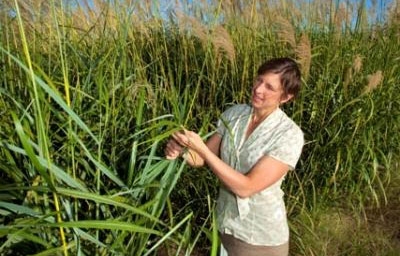UC Blogs
GMOs featured in a healthy debate at Berkeley
The class' co-instructor, food writer and activist Michael Pollen, said he is still opposed to the use of GMOs in agriculture, but admitted it's getting lonely in his camp. He said he believes GMOs are tending to more firmly establish mono-cropping practices, favor large-scale industrial agriculture and that Roundup resistant crops are leading to the development of Roundup resistant weeds.
"It's a shame to demonize an entire technology because of Roundup Ready,” Ronald said.
In the New Yorker article, Little shared several of Ronald's points:
- Bt cotton has cut the amount of chemical insecticides applied to crops globally by millions of pounds a year
- Papayas genetically engineered to resist ring-spot virus helped to save the Hawaiian papaya industry
- “Scuba rice,” a strain of flood-tolerant rice that can grow in submerged fields, is being grown by four million subsistence farmers in Bangladesh and India
- The world is filling with ever more people and we need ever more food from the same amount of land
- Genetic engineering will play a critical role in protecting finite soil and water resources, staving off crop diseases, and responding to the pressures of climate change.
A Bad Hair Day
"It was a bad hair day," quipped native pollinator specialist Robbin Thorp, emeritus professor of entomology at the University of California,...
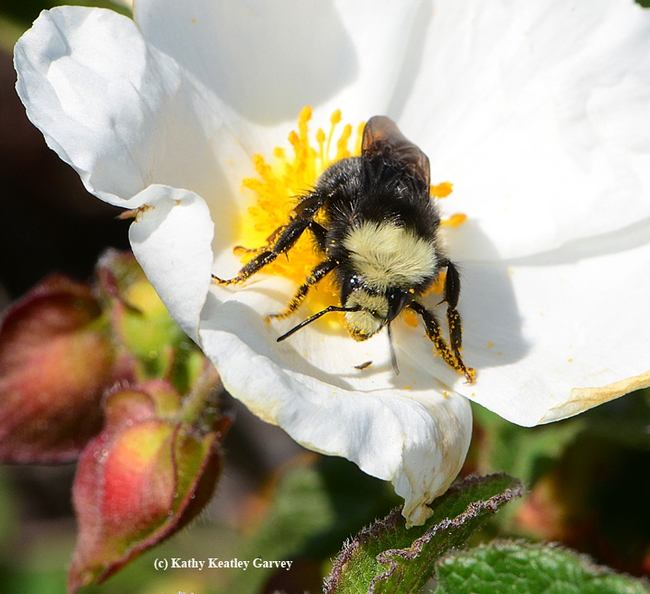
Yellow-faced bumble bee, Bombus vosnesenskii, foraging on rock rose. (Photo by Kathy Keatley Garvey)
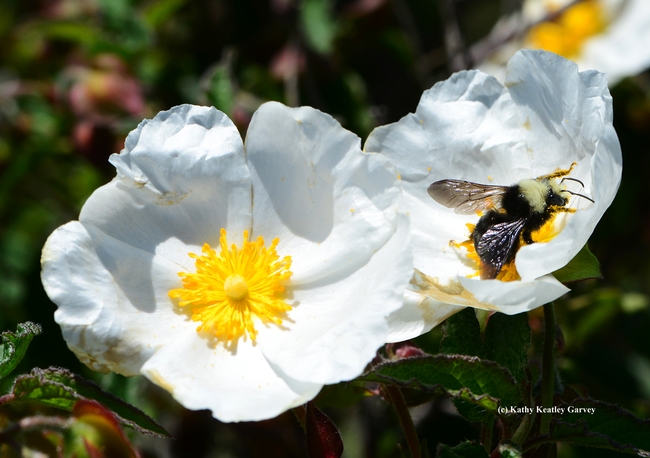
Gust of wind blows the bumble bee to the next blossom. (Photo by Kathy Keatley Garvey)
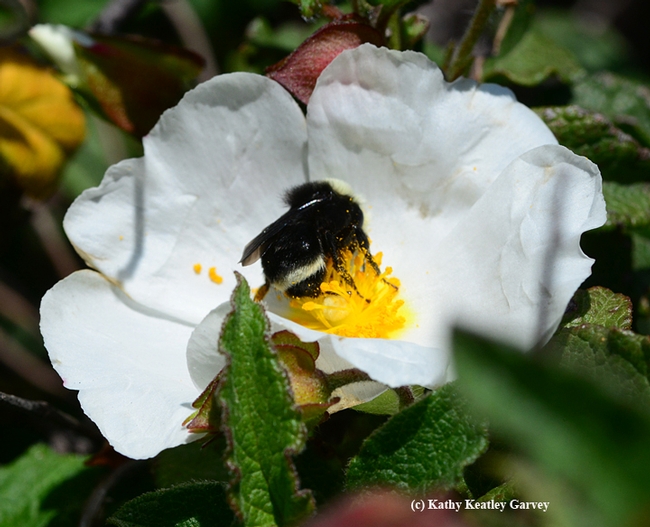
Distinguishing characteristic of the yellow-faced bumble bee, Bombus vosnesenskii. (Photo by Kathy Keatley Garvey)
Food prices expected to rise due to California drought and other factors
The reporter interviewed Milt McGiffen, UC Cooperative Extension specialist in the Department of Botany and Plant Sciences at UC Riverside, who said he remembers hearing about famines in faraway countries when he was growing up.
Reports of widespread hunger scourges have been minimized in recent decades, but he said that those kinds of news stories are “starting to come back."
“It's more of a problem than it was and we're getting to where we have more people than we can feed so we need to do something one way or another,” McGiffen said.
The Riverside plant physiologist said there are myriad ways to bridge the food gap, but that implementing them will require a concerted and deliberate effort.
“There are proposals,” he said. “We need to control our population. We need to use our resources efficiently. The one thing farmers will say over and over again -- and you'll hear this in every industry -- is they will say they need to have less regulations.”
But overall, the future of farming and eating will come down to the ability of humans to come together and work to address these major challenges in creative and effective ways.
“We used to do a lot of research in ag, and we did our job too well, and food became cheap and plentiful so now there's fewer and fewer people looking at these issues,” McGiffen explained.
“We're going to have to decide where our priorities are.”
A Strong Will to Live
There's no way to explain it other than some plants have a strong will to live. I've never been a fan of cantaloupes, so last spring when I received a free packet of vine peach (Cucumis melo) seeds, I set the packet aside. Then in September when I started to clear out some of my summer vegetable plants in the yard, I decided to throw a few vine peach seeds in the ground and ignored them, not expecting them to grow.
In late fall I noticed one of them growing. Not being planted at the right time of year and expecting it to die, I never bothered to water it. Surprisingly it continued to grow, surviving the freeze we had during the winter, and staying alive only with the infrequent rain this year. Curious, since I hadn't heard of a vine peach before, I did a little research on the plant.
The vine peach, also known as a mango melon, peach melon, and chito melon, is an annual cantaloupe plant that was very popular in Victorian times. Introduced to American in the 1880's, it produces small melons the size of a peach. It is usually ready for harvest in 60 to 90 days. The melons reportedly have a mild taste and are frequently used for jam, for pies and cakes, and even pickled.
The plants reportedly grow a foot tall with vines up to 10 feet long. Obviously my plant has different ideas since it's about 3 feet tall. I doubt it will ever bear any cantaloupes, but who knows, it just may surprise me. I'm going to have to plant my vegetable garden around this plant out of respect. Given its will to survive, I just don't have the heart to kill it.
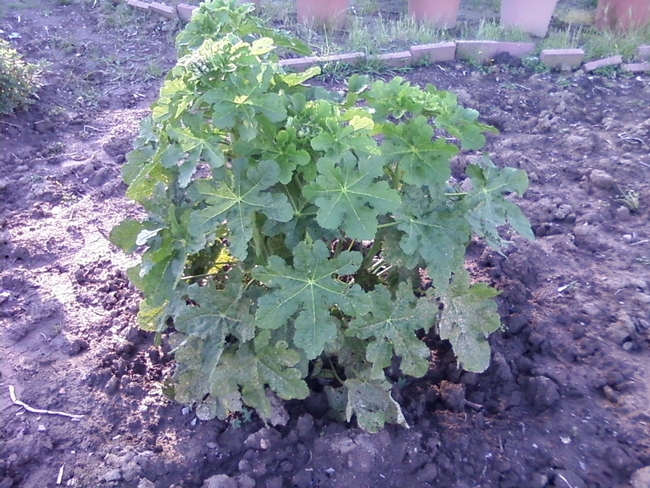
Vine peach. (photo by Kathy Low)
Everything's Coming Up Roses
UC Integrated Pest Management Program (UC IPM) staff distributed ladybugs (actually lady beetles, but when you say "lady beetles," someone is sure to...
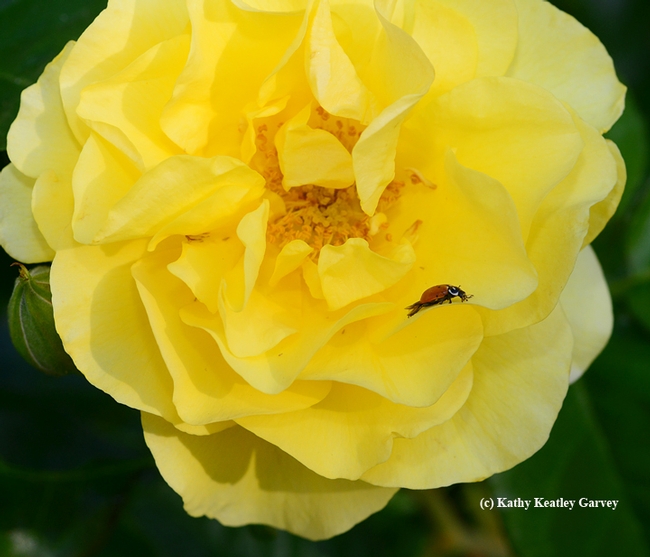
A ladybug foraging on a yellow rose, Sparkle and Shine. (Photo by Kathy Keatley Garvey)


